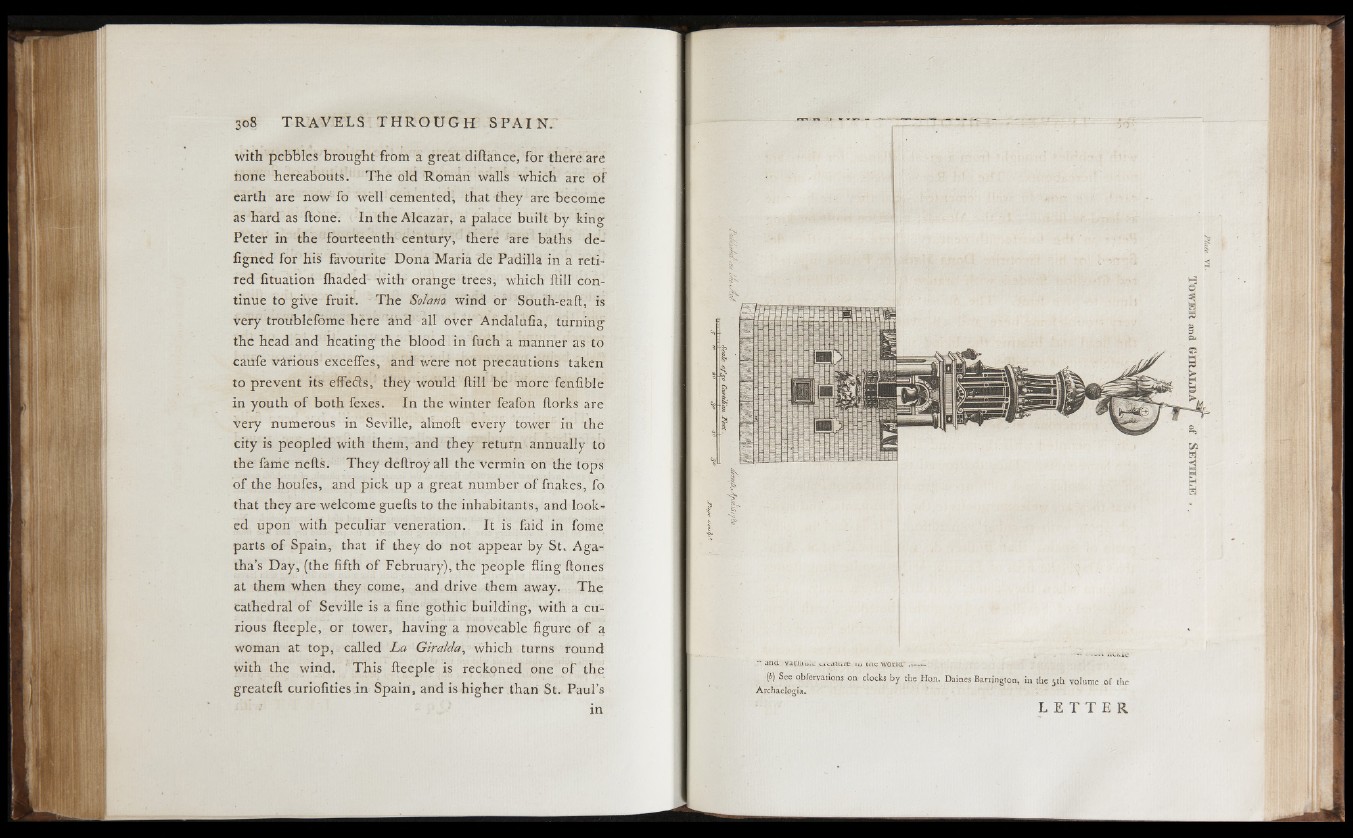
with pebbles brought from a great diftance, for there are
hone hereabouts. The old Roman walls which are of
earth are now fo well cemented, that they are become
as hard as fto'ne; In the Alcazar, a palace built by king
Peter in the fourteenth century, there are baths de-
figned for his favourite Dona Maria de Padilla in a retired
fituatioii fhaded with orange trees; which ftill continue
to give fruit. The Solano, wind or South-eaft, is
very troublefbme here and all over Andaluiia, turning1
the head and heating the blood in fuch a manner as to
caufe various excelfes, and were not precautions taken
to prevent its effe<fts, they would ftill be more feniible
in youth of both fexes. In the winter feafon ftorks are
very numerous in Seville, almoft every tower in the
city is peopled with them, and they return annually to
the fame nefts. They deftroyall the vermin on the tops
of the houfes, and pick up a great number of fnakes, fo
that they are welcome gueits to the inhabitants, and looked
upon with peculiar veneration. It is faid in fome
parts of Spain, that if they do not appear by St. Agatha’s
Day, (the fifth of February), the people fling ftoneS
at them when they come, and drive them away. The
cathedral of Seville is a fine gothic building, with a curious
fteeple, or tower, having a moveable figure of a
woman at top, called La Giralda, which turns round
with the wind. This fteeple is reckoned one of the
greateft curiofities in Spain, and is higher than St. Paul’s
in
Scale i/ jo (ju.vtilt.an F e e t
(6) See obfervations on clocks by the Hon. Dairies Barrington, in the y h volume of the
Archaelpgia..
K'TTXAHS J° / V t tW H IO HHGMlO X